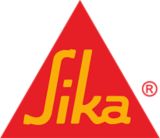NFPA 285 Compliant Wall Systems
What is NFPA 285?
Published by National Fire Protection Association (NFPA), the NFPA 285 Standard Fire Test Method for Evaluation of Fire Propagation Characteristics of Exterior Wall Assemblies Containing Combustible Components is designed to evaluate fire propagation characteristic of exterior wall assemblies and panels used as components of curtain wall assemblies that are constructed using combustible materials or incorporate combustible components. To put it simply, the test evaluates how a fire will spread on an exterior wall assembly that includes combustible materials.
Designing for Code Compliance: Fire Performance and Energy Efficiency
Creating non-combustible exterior wall assemblies has become increasingly challenging as building design has evolved toward greater levels of energy efficiency. To meet the requirements of the International Energy Conservation Code (IECC), buildings have to incorporate air/water-resistive barriers on exterior sheathing and CMU walls, together with extensive use of exterior insulation. In addition to improving energy efficiency, these changes can provide effective moisture management by incorporating an airtight secondary drainage plane, and by moving the dew point of the wall assembly outside of the drainage plane.
However, both the air/water-resistive barrier and many types of exterior insulation are made from organic materials that are combustible. One challenge for design professionals is to incorporate combustible materials into noncombustible construction in a way that reliably provides the fire performance required by the International Building Code (IBC).
Solutions for Non-combustible Construction
The following Senergy wall systems have been comprehensively qualified for use in noncombustible construction. When installed per Senergy details and instructions, they provide code-compliant fire performance as listed on system brochures. These systems meet the full range of International Building Code (IBC) and International Energy Conservation Code (IECC) requirements, and are supported with third-party test data, architectural details and system warranties.

